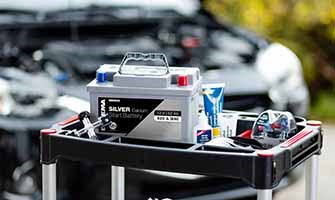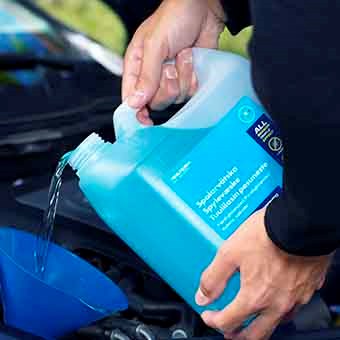Electrical installations in the home
Electrical work you can perform yourself
Knowledge and caution are important for all electrical work. Most electrical work must be performed by a licenced electrician, but you are able to carry out simpler jobs as long as you know what you are doing. As a home owner or inhabitant of a property, you are responsible for ensuring that electrics are correctly installed and that the electrical appliances you use are intact and used correctly.
Take no risks when performing electrical work
If you are the least bit unsure, the work should be carried out by an electrician. Incorrect electrical work can result in fires, property damage and personal injuries. Never take a chance – a single mistake may have dire consequences.
Turn off the power before you start
Regardless of the electrical work to be performed, you must always start by turning off the power. If working with an appliance, disconnect its plug from the socket. If performing electrical work on permanent installations such as ceiling lights, wall sockets or switches, remove the fuses (D-type) or turn off mains power. Before you start, make sure the power has been turned off properly and that the equipment you will be working with has no current. Also make sure that no one else can turn the power back on while you are performing the work.
Electrical work you may perform yourself
Replace broken fuses and reset automatic fuses
If the fuse trips again, it means there is a fault that must be fixed. Contact an electrician if you are unable to find the fault. Broken fuses must be discarded – never try to repair them.
Change light bulbs
Make sure the output of a new bulb does not exceed that stated on the fixture, e.g. ”Max. 10 W”. The other instructions on the fixture must also be followed carefully. This is particularly important when using reflector bulbs and halogen bulbs.
Make an extension cord
If you intend to make an extension cord for use in an earthed socket, the full length of the extension cord must be earthed. Remember to check that the green/yellow protective conductor is securely and correctly in place. It must never be connected to a screw terminal other than the one marked with the earth symbol.
Repair and replace parts of extension cords and appliance cables
You may not carry out repairs if the cord has broken or if the insulation is damaged. You may, however, cut off the damaged part. When replacing cords, plugs, and extension sockets, you must use the same types of materials as the originals. (If you need to replace other types of plugs on lamps or household appliances, they must be handed in to a professional for modification.)
Replace permanently installed switches and wall sockets (max. 16 A)
Use caution. Disconnect the voltage by either unscrewing the fuse or turning off the mains power. Make sure there is no power to the switch or socket before starting the work.
Replace light fixtures in dry, non-flammable, indoor areas
Provided that you have the knowledge to do so, you may replace permanently connected light fixtures indoors. For all other fixtures, contact a licenced electrician.
Examples of electrical work that may only be performed by an electrician
- Creating permanent electrical installations
- Installing underfloor heating and heating cables
- Replacing unearthed wall sockets with earthed sockets
- Embedding cables into the ground
Source: www.elsakerhetsverket.se
For more information or if you are the least bit unsure, visit the website of the Swedish National Electrical Safety Board: www.elsakerhetsverket.se. We recommend reading Elsäkerhetspocket which can be downloaded from the Swedish National Electrical Safety Board. Alternatively, contact a licensed electrician.




